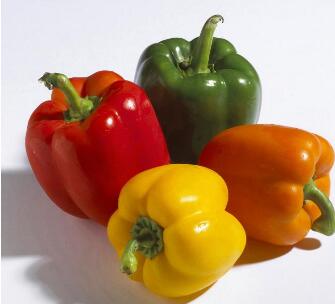
There's misinformation floating around about how and why bell peppers go from green with a more bitter taste to brighter colors with a sweeter taste, as well as other myths about bell peppers. It's time to set the record straight.
Red peppers are all other colors before becoming red
It is true that all red peppers start out as green, but they don't turn yellow or orange before they turn red. They usually turn chocolate brown before turning red. It takes time and sun to turn them red, and as their color changes, they become more susceptible to damage from extreme weather. What about yellow and orange bell peppers? They come from seeds that have specifically been bred to create peppers that turn from green to yellow or green to orange.
Male peppers vs. female peppers
If you look at the number of bumps on the bottom of a pepper, you can tell if it's a male or a female. The ones with three bumps are male, and the ones with four are female, which are sweeter and better to eat raw. The only problem with this helpful fact is that it's not true. It's a myth. And, if you read enough websites that perpetuate the myth, the facts sometimes are reversed. The male ones with three bumps are sometimes said to be sweeter.
Oregon State University Extension Service explains that "all pepper fruits are ripened ovaries containing seeds formed after pollination." They are neither male nor female and the bumps don't mean anything. It's just how that particular pepper grew. Sweetness is determined by ripeness, not the number of bumps on a pepper's bottom.
Bell peppers are vegetables
Peppers (and that includes bell peppers) are, by definition, fruits! Many things we call vegetables are technically fruits because the definition of a fruit is anything that comes from the "mature ovary of a plant and the ovary found in the flower." Peppers are in good company with other fruits such as tomatoes, eggplants and green beans.







